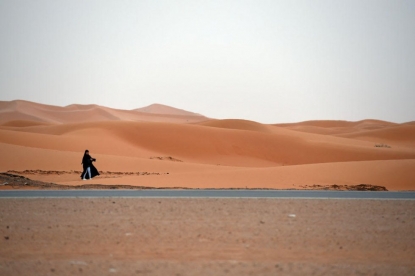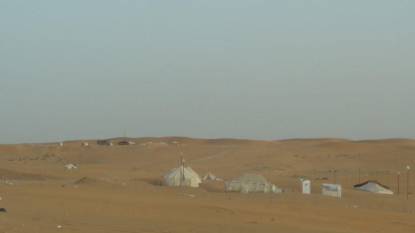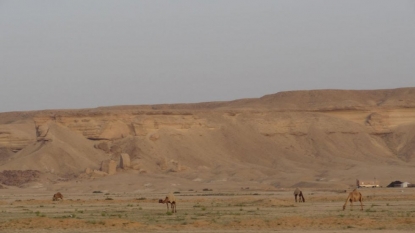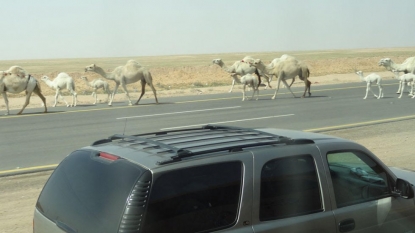Saudi desert beauty
HAFR AL-BATIN, Saudi Arabia, March 17, 2016 -- I never imagined there could be so much beauty and so much to see in the desert. Thanks to a wrong turn, I got a close-up view.
In my first 18 months as AFP’s bureau chief in Saudi Arabia I had visited the kingdom’s four corners, but always by air. A road trip is the only way to truly know a country, and this was my first.
With AFP colleague and photographer Fayez Nureldine at the wheel, and Reuters cameraman Samer Fathi navigating, we left Riyadh in the late afternoon for Hafr al-Batin in the kingdom’s northeast.
 (AFP / Fayez Nureldine)
(AFP / Fayez Nureldine)It was a journey of 515 kilometres (319 miles) that would take us almost to Kuwait for coverage of the Northern Thunder regional military exercises. Somewhere outside Riyadh’s city limits we turned off the highway onto what we thought was the right way, a smaller road flanked by red sand where some people sat for a picnic.
At play in the desert
Saudis are at home in the desert, where city-based families go to relax. There were many large, solid-looking tents, often with white trailers nearby, for longer stays in relative comfort.
Then the earth became dusted with a beautiful light green fuzz of vegetation. This much I had seen before in Sudan’s Darfur, when rains bring life to the dry ground.
In the distance loomed a towering wall of rock that stretched for kilometres on both sides of our road. We passed a sign advising that this was an “Animals Route”, of which we had no doubt given the number of camels we had seen.
The road easily ascended the rock wall, a small mountain really, putting us atop a landscape of bare, stony, low hills. Even though this is desert, there were patches of water here and there, like puddles.

(Photo courtesy of Ian Timberlake)
Few cars travelled this two-lane, winding route, where the hills gave way to table-top flatness devoid of anything except a white shed in the distance.
We had travelled less than two hours. Fleeting signs of life appeared: a load of hay, and two men sitting on chairs in front of a rusted trailer. On the opposite side of the road a woman, her face obscured by an all-black abaya robe, sold white bags of something, perhaps sugar, lined up outside a hut.
The sun was dropping behind herds of goats on the west side, while the flatness to the east was broken only by far-off camels, their necks bent as they nibbled on the newly-sprouted dusting of greenery.
Bedouin country
This is known as Bedouin country, home to traditionally nomadic camel and goat herders.
We passed a large camp, with truck trailers, pens of goats, and one rough-looking white tent with a Saudi flag flapping in the breeze on a stick. There was a simple white mosque, a humble contrast to more grand houses of worship in the capital.
The landscape changed to red hillocks of sand, where cellular telephone towers assured that we weren’t completely cut off from the rest of the world. But the darkness that closed in emphasized the vastness of the land around us and brought with it an unnerving feeling of isolation.

(Photo courtesy of Ian Timberlake)
Fayez said he worried about camels crossing our path. On the rough, virtually empty unlit road, that was a real concern. A small shop, all lit up, and distant rows of white lights, provided comfort amid the blackness. I wound down the window to look at the stars.
After about three hours we reached a major crossroads with a gas station, mosque, restaurant and a shop selling everything from snacks to holsters for handguns. From there we turned onto a real highway which Samer, now at the wheel, took advantage of to drive at high speed.
We had been on the wrong road. But for me it felt right. I wished I were back there, travelling more slowly, still with time to savour the desert’s many beauties.
Ian Timerlake is AFP's bureau chief in Saudi Arabia. Follow him on Twitter.

(Photo courtesy of Ian Timberlake)


